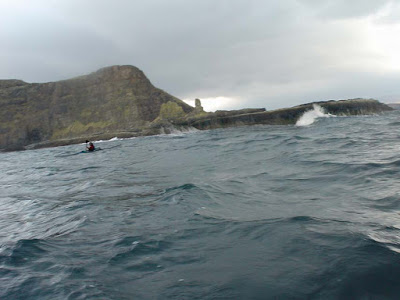
January
Looking northeast from Sgeir a'Ghail, Loch Nevis, to Knoydart.

February
Cailean Macleod at Coldingham Bay, Scottish Borders.

March
The distant Cuillin mountains of Skye are seen to the south west from Eilean Stacan, Loch Carron.

April
The Scarba shore of the Gulf of Corryvreckan at slack water. 15 minutes later we were doing 18km/hr without paddling!

May
No, it's not Scotland! It is the wonderful reef of Les Ecrehous 10.5km NE off the NE corner of Jersey in the Channel Islands.

June
Looking towards the grey hills of Lewis from Scarp.

July
The entrance of Loch Rog, Lewis.

August
The Sound of Harris from Bearnaraigh.

September
Sea stacks at Cliobh, Lewis.

October
Paddling out to Bearasaigh and Seana Chnoc, Lewis.

November
The tidal Clachan Sound runs under the "Bridge over the Atlantic", Nether Lorn.

December
Sunset down the Sound of Jura from Loch Caolisport, Knapdale.
The photos here on Blogger are 640x800. If you would like high resolution 1024x1280, 1024x768 or 800x600 copies, please visit the Scottish Sea Kayaking Photo Gallery.
May 2007 be good to you.







































